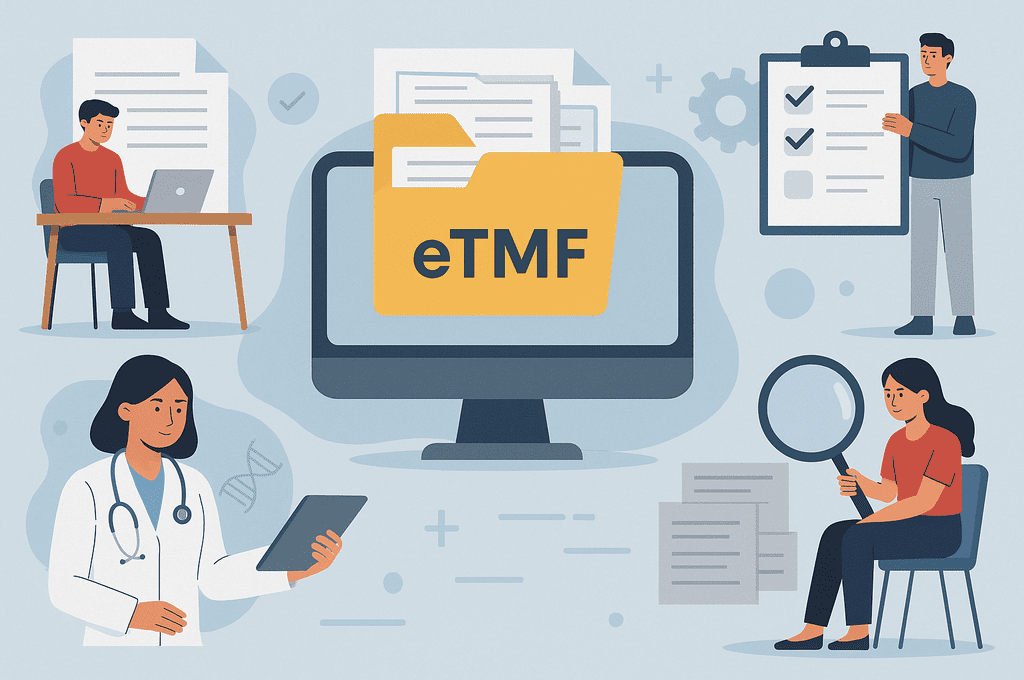The worldwide clinical trial management system CTMS & eTMF market is predicted to increase at a rate of 13.9% during the next decade, reaching $4.72 billion by 2030. This predicted increase is aided by digital acceleration in the form of a rising number of decentralized clinical trials, and the demand for top CTMS solutions has never been higher.
Yet, despite the constant advancement of trial management systems, users such as CROs, sponsors, and sites are still confronted with CTMS & eTMF software solutions that aren't influenced by meaningful design, or that charge exorbitant costs and/or need burdensome contracts. This can limit an organization's capacity to respond in a changing world by tying it to substandard tools.
"To address the shifting demands of the Life Sciences industry, it is critical to identify vendors who prioritize product and service innovation. An ideal CTMS and eTMF system does more than just fulfill the fundamental demands of the present; it delivers actual freedom and control by offering flexibility, scalability, and affordability over time."
-Krunal Bhatt, Technical Team Manager - Octalsoft
In this article, we'll examine what users genuinely want from a CTMS and eTMF, focusing on three important design elements that are critical to a successful, long-term trial management system that truly satisfies industry demands.
1. Flexibility
By adopting and maintaining separate e-clinical instruments, you avoid the unnecessary load of being oversold on outmoded or large systems. Furthermore, for sponsors that collaborate with different partners, deliberately built features enable research oversight inside a single system and in your desired format.
What to look for:
- Full data management control on a single system, whether in-house or managed by a CRO
- Customized to meet the demands of the study and team
- APIs that allow you to interact with other systems right away.
An ideal solution allows for easy customization for study and cross-study purposes, such as a customizable column feature, custom fields, custom trackers, and so on. It may also supply both of the following as standard offerings:
- Data import features are readily available, and templates are simple to utilize.
- Exports of data and dashboards in standard formats to satisfy study supervision requirements.
- The ability to swiftly create new studies, templates, or rosters using existing studies.
2. Scalability
Scalability provides the opportunity to update plans and licenses to meet growth or to add more CTMS and eTMF tools. Having a well-designed and feature-forward solution allows companies to pick complementing best-in-class solutions without being constrained or limited in their options—for example, being "locked in" to using a less effective EDC vendor due to an inflexible CTMS system for clinical trials
What to look for:
- A strong product designed to meet changing research requirements.
- Products from the eClinical provider that grow rapidly and effortlessly, without costly or resource-intensive delays
- Ease of using connections with other systems such as EDC
An ideal solution will have a complete feature set with the option to adopt features as needed and integrate features when appropriate (such as automatically posting final visit reports and attachments to the eTMF). As studies develop and responsibilities grow, having the capability to manage demands like monitoring trip reports, site contracts and payments, study forecasts, and risk-based management on hand can assist teams in managing the study and financial health without missing a beat.
3. Affordability
Clients save hidden costs and dependencies when they are not needed to acquire and piece together various e-clinical systems, such as system start-up fees, adoption fees, integration fees, connection fees, and even training expenses.
What to look for:
- Transparent, pay-for-what-you-need subscription approach free of long-term commitments
- On-demand, no starting delays or hidden fees
- A wide selection of assistance resources are given at no additional cost.
As a key principle, an ideal CTMS software clinical trial solution promotes openness and fair cost, with concrete outcomes for the consumer. For example, offering extensive and up-to-date support resources in a range of formats, such as quick-start instructions, videos, and training manuals, or even a searchable knowledge database, as a standard feature. A competitively cost system also allows clients to acquire optional services such as validation documents when needed, rather than raising the price for all clients.
In Summation
Octalsoft’s eTMF and CTMS enhance interoperability and scale with changing regulatory demands. It coordinates clinical trial planning, preparation, performance, and reporting, with a focus on keeping trial participants' contact information up to current and tracking deadlines and achievements.
From seamless data migration and comprehensive user training to customization options, data security, collaboration tools, scalability, and future-proofing, Octalsoft's CTMS and eTMF ensure a smooth and successful transition. By choosing Octalsoft, organizations can mitigate concerns, streamline their clinical trial operations, and pave the way for improved outcomes and efficiency in their research endeavors. Here’s how you can move to eClinical data management excellence and leave the incompetencies of a legacy CTMS behind.



